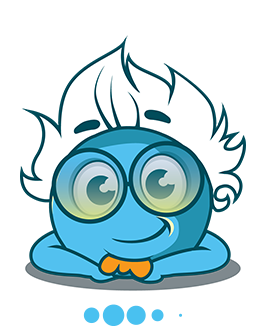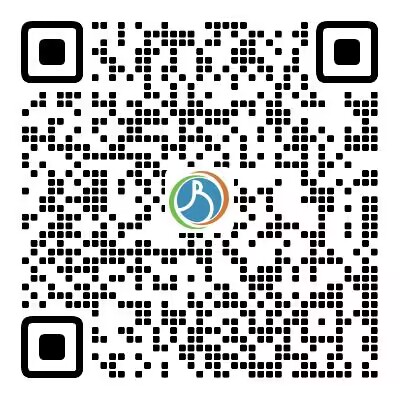-
Western blot analysis of 14-3-3 Epsilon/YWHAE using anti-14-3-3 Epsilon/YWHAE antibody (M01687-2). The sample well of each lane was loaded with 30 ug of sample under reducing conditions.
Lane 1: Hela whole cell lysates,
Lane 2: SH-SY5Y whole cell lysates,
Lane 3: SW620 whole cell lysates,
Lane 4: Raji whole cell lysates,
Lane 5: rat brain tissue lysates,
Lane 6: PC-12 whole cell lysates,
Lane 7: mouse brain tissue lysates,
Lane 8: NIH/3T3 whole cell lysates.
After electrophoresis, proteins were transferred to a membrane. Then the membrane was incubated with mouse anti-14-3-3 Epsilon/YWHAE antigen affinity purified monoclonal antibody (M01687-2) at a dilution of 1:1000 and probed with a goat anti-mouse IgG-HRP secondary antibody (Catalog # BA1050). The signal is developed using ECL Plus Western Blotting Substrate (Catalog # AR1197). A specific band was detected for 14-3-3 Epsilon/YWHAE at approximately 29 kDa. The expected band size for 14-3-3 Epsilon/YWHAE is at 29 kDa.
-
IHC analysis of 14-3-3 Epsilon/YWHAE using anti-14-3-3 Epsilon/YWHAE antibody (M01687-2).
14-3-3 Epsilon/YWHAE was detected in a paraffin-embedded section of human Colorectal adenocarcinoma tissue. Biotinylated goat anti-mouse IgG was used as secondary antibody. The tissue section was incubated with mouse anti-14-3-3 Epsilon/YWHAE Antibody (M01687-2) at a dilution of 1:200 and developed using Strepavidin-Biotin-Complex (SABC) (Catalog # SA1021) with DAB (Catalog # AR1027) as the chromogen.
-
IHC analysis of 14-3-3 Epsilon/YWHAE using anti-14-3-3 Epsilon/YWHAE antibody (M01687-2).
14-3-3 Epsilon/YWHAE was detected in a paraffin-embedded section of human liver cancer tissue. Biotinylated goat anti-mouse IgG was used as secondary antibody. The tissue section was incubated with mouse anti-14-3-3 Epsilon/YWHAE Antibody (M01687-2) at a dilution of 1:200 and developed using Strepavidin-Biotin-Complex (SABC) (Catalog # SA1021) with DAB (Catalog # AR1027) as the chromogen.
-
IHC analysis of 14-3-3 Epsilon/YWHAE using anti-14-3-3 Epsilon/YWHAE antibody (M01687-2).
14-3-3 Epsilon/YWHAE was detected in a paraffin-embedded section of human tonsil tissue. Biotinylated goat anti-mouse IgG was used as secondary antibody. The tissue section was incubated with mouse anti-14-3-3 Epsilon/YWHAE Antibody (M01687-2) at a dilution of 1:200 and developed using Strepavidin-Biotin-Complex (SABC) (Catalog # SA1021) with DAB (Catalog # AR1027) as the chromogen.
-
IHC analysis of 14-3-3 Epsilon/YWHAE using anti-14-3-3 Epsilon/YWHAE antibody (M01687-2).
14-3-3 Epsilon/YWHAE was detected in a paraffin-embedded section of human endometrial cancer tissue. Biotinylated goat anti-mouse IgG was used as secondary antibody. The tissue section was incubated with mouse anti-14-3-3 Epsilon/YWHAE Antibody (M01687-2) at a dilution of 1:200 and developed using Strepavidin-Biotin-Complex (SABC) (Catalog # SA1021) with DAB (Catalog # AR1027) as the chromogen.
-
IHC analysis of 14-3-3 Epsilon/YWHAE using anti-14-3-3 Epsilon/YWHAE antibody (M01687-2).
14-3-3 Epsilon/YWHAE was detected in a paraffin-embedded section of human placenta tissue. Biotinylated goat anti-mouse IgG was used as secondary antibody. The tissue section was incubated with mouse anti-14-3-3 Epsilon/YWHAE Antibody (M01687-2) at a dilution of 1:200 and developed using Strepavidin-Biotin-Complex (SABC) (Catalog # SA1021) with DAB (Catalog # AR1027) as the chromogen.
-
IHC analysis of 14-3-3 Epsilon/YWHAE using anti-14-3-3 Epsilon/YWHAE antibody (M01687-2).
14-3-3 Epsilon/YWHAE was detected in a paraffin-embedded section of human Bladder epithelial carcinoma tissue. Biotinylated goat anti-mouse IgG was used as secondary antibody. The tissue section was incubated with mouse anti-14-3-3 Epsilon/YWHAE Antibody (M01687-2) at a dilution of 1:200 and developed using Strepavidin-Biotin-Complex (SABC) (Catalog # SA1021) with DAB (Catalog # AR1027) as the chromogen.
-
IHC analysis of 14-3-3 Epsilon/YWHAE using anti-14-3-3 Epsilon/YWHAE antibody (M01687-2).
14-3-3 Epsilon/YWHAE was detected in a paraffin-embedded section of human Laryngeal squamous cell carcinoma tissue. Biotinylated goat anti-mouse IgG was used as secondary antibody. The tissue section was incubated with mouse anti-14-3-3 Epsilon/YWHAE Antibody (M01687-2) at a dilution of 1:200 and developed using Strepavidin-Biotin-Complex (SABC) (Catalog # SA1021) with DAB (Catalog # AR1027) as the chromogen.
-
Flow Cytometry analysis of ANA-1 cells using anti-14-3-3 Epsilon/YWHAE antibody (M01687-2).
Overlay histogram showing ANA-1 cells stained with M01687-2 (Blue line). To facilitate intracellular staining, cells were fixed with 4% paraformaldehyde and permeabilized with permeabilization buffer. The cells were blocked with 10% normal goat serum. And then incubated with mouse anti-14-3-3 Epsilon/YWHAE Antibody (M01687-2) at 1:100 dilution for 30 min at 20°C. Fluoro488 conjugated goat anti-mouse IgG (BA1126) was used as secondary antibody at 1:100 dilution for 30 minutes at 20°C. Isotype control antibody (Green line) was mouse IgG at 1:100 dilution used under the same conditions. Unlabelled sample without incubation with primary antibody and secondary antibody (Red line) was used as a blank control.
-
Flow Cytometry analysis of NRK cells using anti-14-3-3 Epsilon/YWHAE antibody (M01687-2).
Overlay histogram showing NRK cells stained with M01687-2 (Blue line). To facilitate intracellular staining, cells were fixed with 4% paraformaldehyde and permeabilized with permeabilization buffer. The cells were blocked with 10% normal goat serum. And then incubated with mouse anti-14-3-3 Epsilon/YWHAE Antibody (M01687-2) at 1:100 dilution for 30 min at 20°C. Fluoro488 conjugated goat anti-mouse IgG (BA1126) was used as secondary antibody at 1:100 dilution for 30 minutes at 20°C. Isotype control antibody (Green line) was mouse IgG at 1:100 dilution used under the same conditions. Unlabelled sample without incubation with primary antibody and secondary antibody (Red line) was used as a blank control.
-
ICC/IF analysis of 14-3-3 Epsilon/YWHAE using anti-14-3-3 Epsilon/YWHAE antibody (M01687-2).
14-3-3 Epsilon/YWHAE was detected in an immunocytochemical section of Caco-2 cells. The section was incubated with mouse anti-14-3-3 Epsilon/YWHAE Antibody (M01687-2) at a dilution of 1:100. Fluoro594-conjugated Anti-mouse IgG Secondary Antibody (red)(Catalog#BA1141) was used as secondary antibody. The section was counterstained with DAPI (Catalog # AR1176) (Blue).


 您当前的位置: 首页 > 产品列表
您当前的位置: 首页 > 产品列表
 鄂公网安备 42018502007312号
鄂公网安备 42018502007312号


 积分商城
积分商城  购物车
购物车  登录/注册
登录/注册  成功添加到购物车
成功添加到购物车 微信客服
微信客服 微信扫一扫立即咨询
微信扫一扫立即咨询